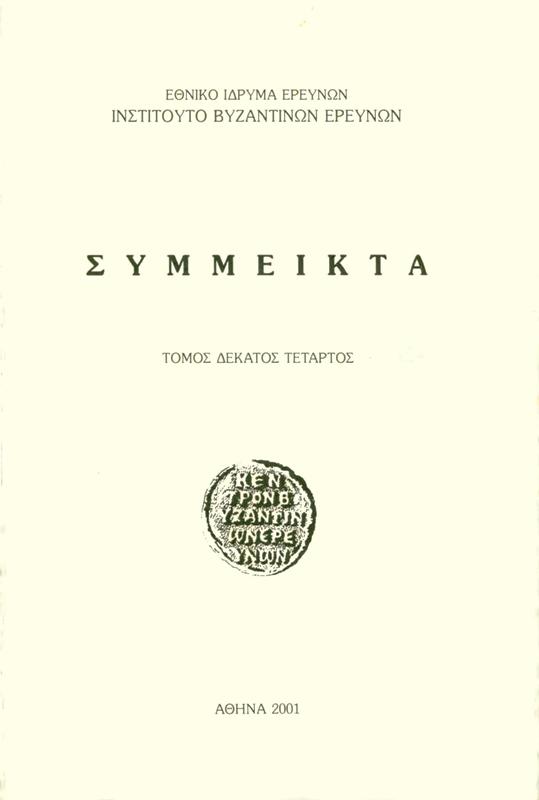Η «επιβουλή» του Ρωμανού Βοΐλα. Μία μορφή πρόληψης συνωμοσίας στα μέσα του 11ου αιώνα

Abstract
Stauroula Hondridou
The plot of Romanus Boïlas: A Type of Concpiracy Prevention in the Mid-Eleventh Century
Conspiracy was not rare during the long-lived history of Byzantium. Accordingly, the plot of Romanus Boïlas against Constantine IX Monomachos, in the middle of the 11th century, would not have been of great interest, if the way by which the Byzantine emperor handled it did not render it an event worth to investigate.
According to the sources, Romanus Boïlas served Monomachos' bodyguard battalions, when he acquainted the emperor. Soon, he rose in the state hierarchy and became politically powerful, a fact that enabled him to conspire against the throne. His plot was revealed before his attempting to assassinate the emperor and was himself arrested. However, during the trial Monomachos tried to acquit Boïlas by claiming the offender's naiveté and honesty. After the deliberations, Monomachos honoured Boïlas with a symposium, while Boïlas abettors were arrested, tortured, deprived of their property and exiled.
Byzantine historiographers interpret Monomacho's peculiar reaction as the result of his dependency on Boïlas, whom they consider as the emperor's buffoon, although the Emperor was in his hands a weak-willed tool.
Nevertheless, the thorough examination of the sources, the investigation of the two heroes' profiles according to the point of view represented by Byzantine historiographers, and the detailed study of the political events at the time of the conspiracy, lead us to a different conclusion. Thus, Boïlas' plot is not to be seen as a hostile action targeting the central, imperial power, but rather as a means by which the imperial power attempted to control a conspiracy against itself.
Article Details
- How to Cite
-
ΧΟΝΔΡΙΔΟΥ Σ. (2008). Η «επιβουλή» του Ρωμανού Βοΐλα. Μία μορφή πρόληψης συνωμοσίας στα μέσα του 11ου αιώνα. Byzantina Symmeikta, 14, 49–56. https://doi.org/10.12681/byzsym.873
- Issue
- SYMMEIKTA 14
- Section
- Articles

This work is licensed under a Creative Commons Attribution-NonCommercial-ShareAlike 4.0 International License.
Copyright: The copyright for articles in this journal is retained by the author(s), with first publication rights granted to the journal. By virtue of their appearance in this open access journal, articles are free to use (with the exception of the non-granted right to make derivative works) with proper attribution for non-commercial uses (licence Creative Commons 4.0). NHRF retains the worldwide right to reproduce, display, distribute, and use articles published in BYZANTINA SYMMEIKTA in all formats and media, either separately or as part of collective works for the full term of copyright. This includes but is not limited to the right to publish articles in an issue of the Journal, copy and distribute individual reprints of the articles, authorize reproduction of articles in their entirety in another NHRF publication, and authorize reproduction and distribution of articles or abstracts thereof by means of computerized retrieval systems.




